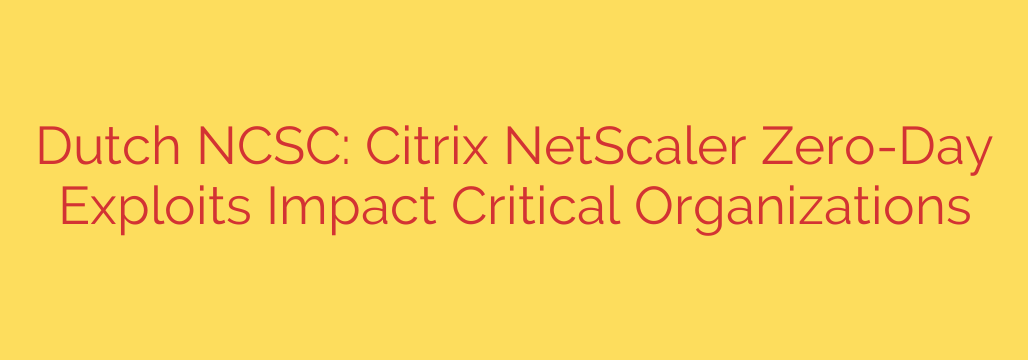
Urgent Security Alert: The ‘Citrix Bleed’ Vulnerability Explained
A severe zero-day vulnerability, dubbed “Citrix Bleed,” is being actively exploited in the wild, posing a significant threat to organizations worldwide. Tracked as CVE-2023-4966, this critical flaw affects Citrix NetScaler ADC and Gateway appliances, allowing attackers to hijack user sessions and bypass all forms of authentication, including multi-factor authentication (MFA).
Cybersecurity agencies are issuing high-priority warnings as evidence mounts that threat actors, including notorious ransomware groups, have been leveraging this exploit for weeks, even before it was publicly disclosed.
What is the ‘Citrix Bleed’ Vulnerability (CVE-2023-4966)?
At its core, CVE-2023-4966 is a sensitive information disclosure vulnerability. When exploited, it allows an unauthenticated attacker to extract data from the device’s memory. The most dangerous information an attacker can steal is an active session cookie or token.
With a valid session token, an attacker can effectively impersonate a legitimate user. This means they can bypass both password and multi-factor authentication (MFA), gaining full access to the user’s applications and data as if they were the authenticated user. This session hijacking capability makes it an incredibly dangerous tool for malicious actors.
The Widespread Impact: A Real-World Threat
This is not a theoretical problem. National cybersecurity centers have confirmed that a substantial number of organizations, including those in critical infrastructure sectors, have already been compromised.
Initial scans revealed thousands of vulnerable servers globally. Even after security patches were released by Citrix on October 10th, many organizations remained at risk. The primary reason is that patching the system does not automatically terminate active sessions. Attackers who stole session tokens before a patch was applied could still use those tokens to maintain access.
Security researchers have linked the exploitation of “Citrix Bleed” directly to ransomware attacks. Threat actors, including the prolific LockBit 3.0 ransomware group, are actively using this flaw to gain initial access into corporate networks, from which they can escalate privileges, steal data, and deploy ransomware.
Actionable Steps to Secure Your Systems Immediately
If your organization uses Citrix NetScaler ADC or Gateway, immediate action is required to mitigate this threat. Simply applying the patch is not enough to ensure your environment is secure.
1. Apply Security Patches Immediately
The first and most essential step is to update your appliances to a patched version. Citrix has released security updates to address CVE-2023-4966. Do not delay this process.
2. Crucially, Terminate All Active and Persistent Sessions
This is the most critical step after patching. Because the vulnerability allows for the theft of session tokens, any sessions that were active before the patch was applied could be compromised. You must kill all active sessions to invalidate any stolen tokens.
To do this, run the following commands from the Citrix ADC command-line interface:
kill aaa session -all
kill icaconnection -all
kill rdp connection -all
kill pcoip connection -all
This step is non-negotiable for complete remediation. Failure to terminate sessions leaves your organization exposed, even after patching.
3. Thoroughly Scan for Signs of Compromise
Given that this vulnerability was exploited as a zero-day, you must assume your systems were targeted before patches were available. It is vital to hunt for evidence of a breach.
- Review authentication logs for unusual or unexpected session activity.
- Monitor network traffic for suspicious connections originating from your NetScaler appliances.
- Scan for the presence of webshells or other malicious tools that
Source: https://securityaffairs.com/181070/hacking/dutch-ncsc-citrix-netscaler-zero-day-breaches-critical-orgs.html








